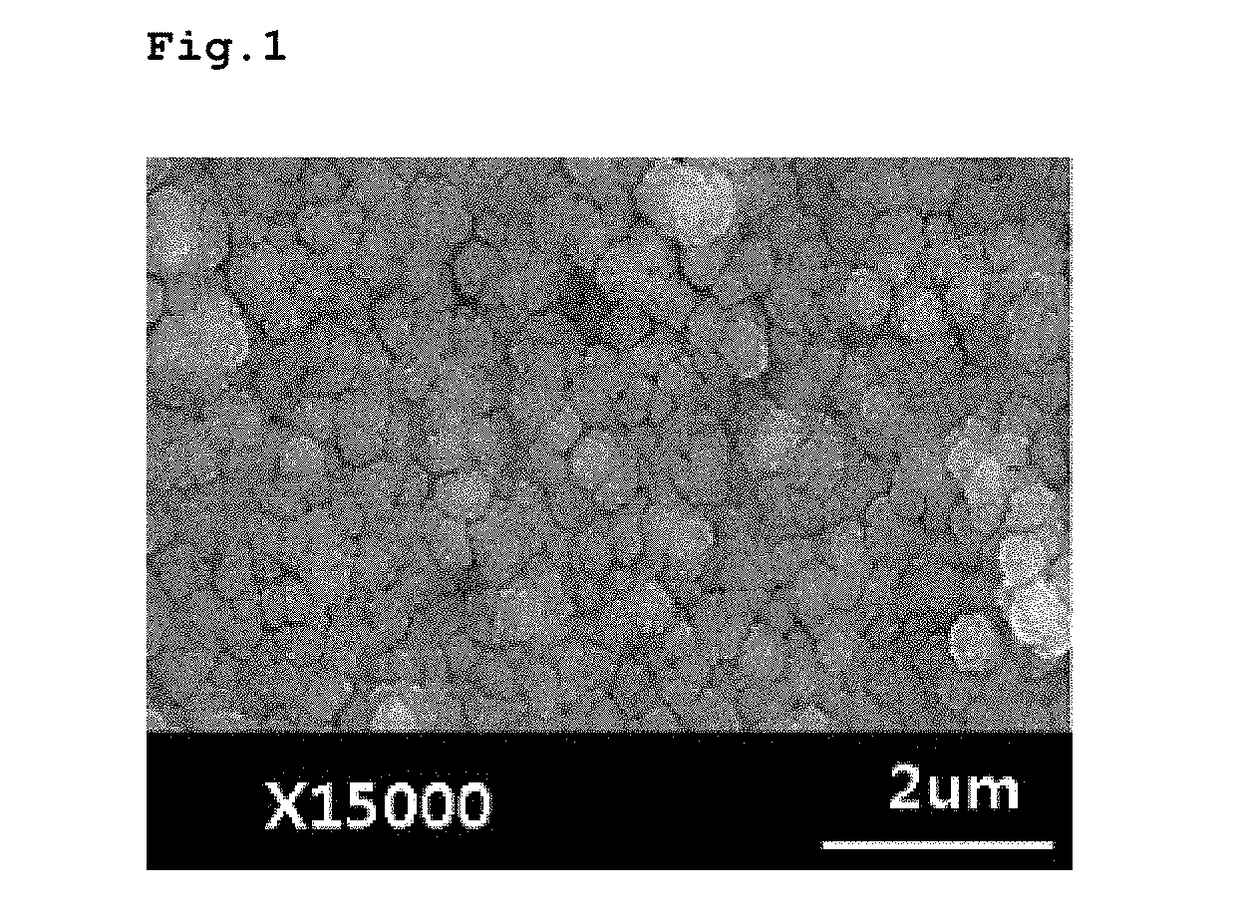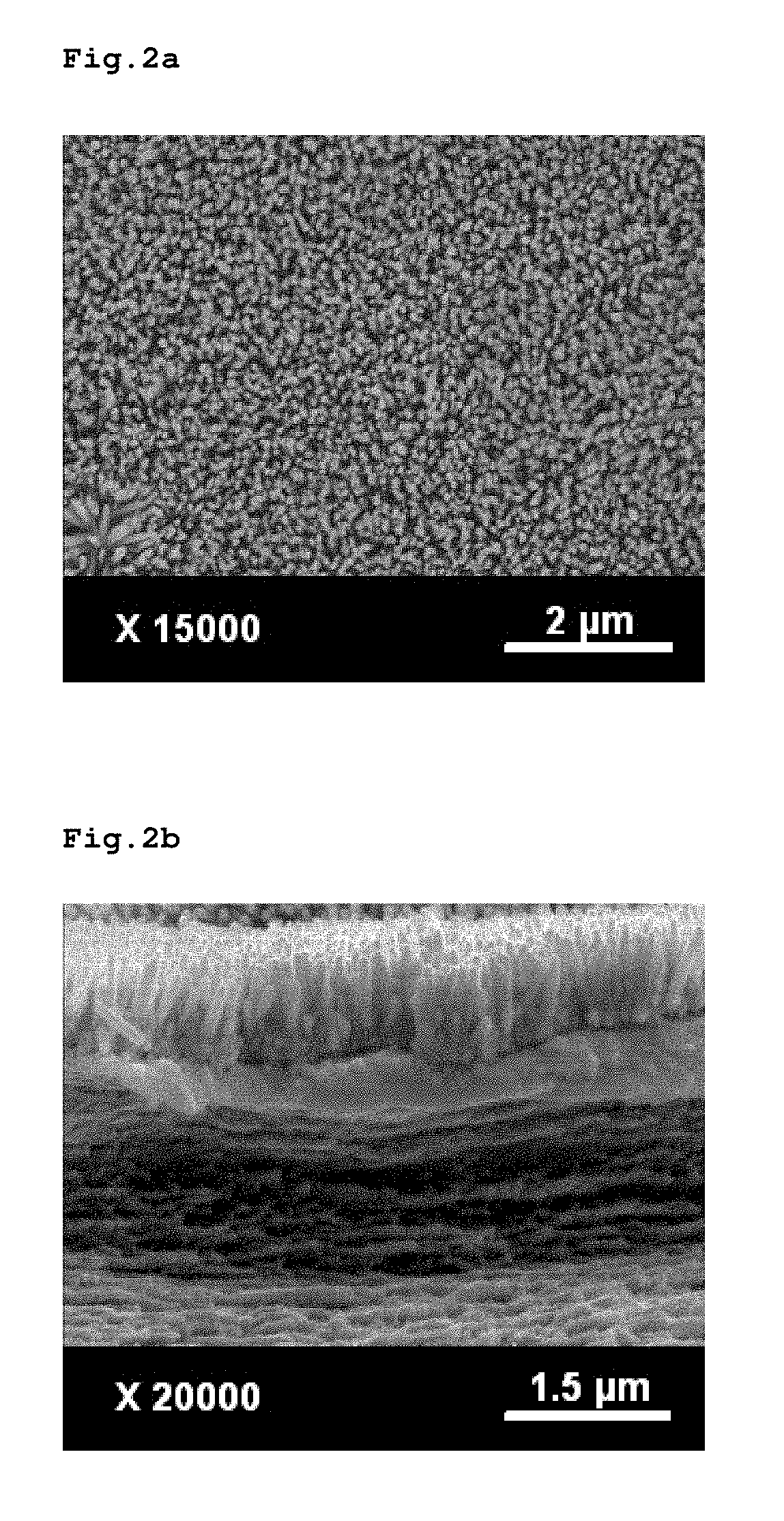Zinc oxide-cellulose nanocomposite and preparation method thereof
a technology of cellulose nanocomposite and zinc oxide, which is applied in the field of zinc oxide (zno)cellulose nanocomposite and a method of preparing thereof, can solve the problems of harmful to the human body, limited temperature range, and heavy weight of piezoelectric ceramics, and achieves excellent piezoelectricity and flexibility, the effect of maximizing the piezoelectricity and significant mechanical properties and piezoelectric properties
- Summary
- Abstract
- Description
- Claims
- Application Information
AI Technical Summary
Benefits of technology
Problems solved by technology
Method used
Image
Examples
preparation example
ulose Film
[0065]The bulk cellulose, cotton pulp having a polymerization degree of 4,500 was cut into small pieces. Each of the cotton pulp and lithium chloride was dried in an oven at 100° C. to evaporate water. The cotton pulp was mixed with lithium chloride and anhydrous DMAc such that the weight ratio of pulp: lithium chloride: anhydrous DMAc was 1:8:90. The mixture was heated with stirring at 135° C. to dissolve the cellulose in the solvent. The wet cellulose film was cast onto a glass substrate using a doctor blade and treated with a 50:50 (v / v) mixture of isopropyl alcohol and deionized water, thereby obtaining a free-standing regenerated wet cellulose film.
example 1
n of Zinc Oxide Seeds by Pre-Coating, and Preparation of Zinc-Oxide Nanocomposite
[0066]0.005 mole of zinc nitrate hexahydrate and 0.005 mole of triethanolamine were dissolved in 500 ml of deionized water. The regenerated wet cellulose film (80×80 mm) prepared in the Preparation Example above was added to and stirred in the solution at 60° C. for 6 hours to produce zinc oxide seeds on the surface and / or inside of the cellulose film.
[0067]Next, the cellulose film having the produced seeds was washed with distilled water to remove unbound zinc oxide particles. The washed cellulose film was added to and reacted with an aqueous solution of 0.03 mole of zinc sulfate and 0.9 mole of ammonium chloride at 60° C. for 6 hours to grow rod-like zinc oxide crystals, thereby forming a zinc oxide layer having a thickness of about 5 μm. The piezoelectric constant and Young's modulus of the zinc oxide-cellulose nanocomposite prepared as described above were measured to be 112 pC / N and 2.3 GPa, respec...
examples 2
of Zinc Oxide Seeds by Blending, and Preparation of Zinc-Oxide Nanocomposite
[0068]15 ml of DMAc was mixed with 100 mg of sodium dodecyl sulfate (SDS), followed by ultrasonic stirring for 2 hours. 100 mg of zinc oxide nanoparticles were added to the stirred solution to prepare a zinc oxide / DMAc solution. Then, 15 ml of a cellulose solution (cellulose pulp / DMAc weight ratio=1.5 wt %) was added to the zinc oxide / DMAc solution, and the mixture was blended by stirring at 60° C. for 2 hours. The resulting blend was subjected to a casting process to form a cellulose film having zinc oxide seeds produced thereon and / or therein.
[0069]Then, the cellulose film having the produced seeds was washed with distilled water to remove unbound zinc oxide particles. The washed cellulose film was added to and reacted with an aqueous solution of 0.03 mole of zinc sulfate and 0.9 mole of ammonium chloride at 60° C. for 6 hours to grow rod-like zinc oxide crystals, thereby forming a zinc oxide layer having ...
PUM
| Property | Measurement | Unit |
|---|---|---|
| temperature | aaaaa | aaaaa |
| temperature | aaaaa | aaaaa |
| temperature | aaaaa | aaaaa |
Abstract
Description
Claims
Application Information
 Login to View More
Login to View More - R&D
- Intellectual Property
- Life Sciences
- Materials
- Tech Scout
- Unparalleled Data Quality
- Higher Quality Content
- 60% Fewer Hallucinations
Browse by: Latest US Patents, China's latest patents, Technical Efficacy Thesaurus, Application Domain, Technology Topic, Popular Technical Reports.
© 2025 PatSnap. All rights reserved.Legal|Privacy policy|Modern Slavery Act Transparency Statement|Sitemap|About US| Contact US: help@patsnap.com



